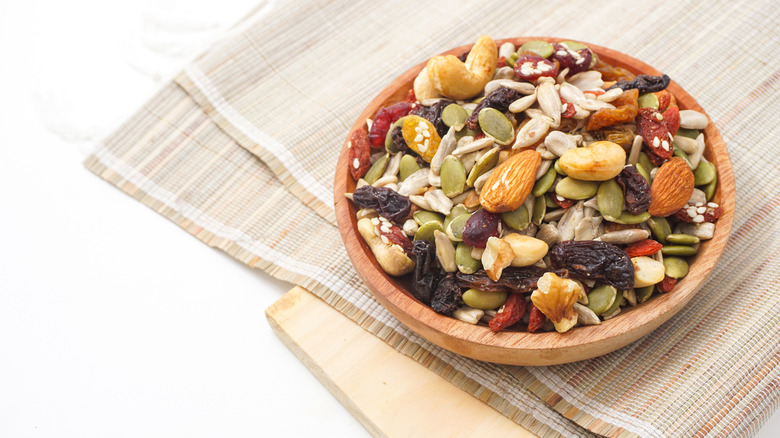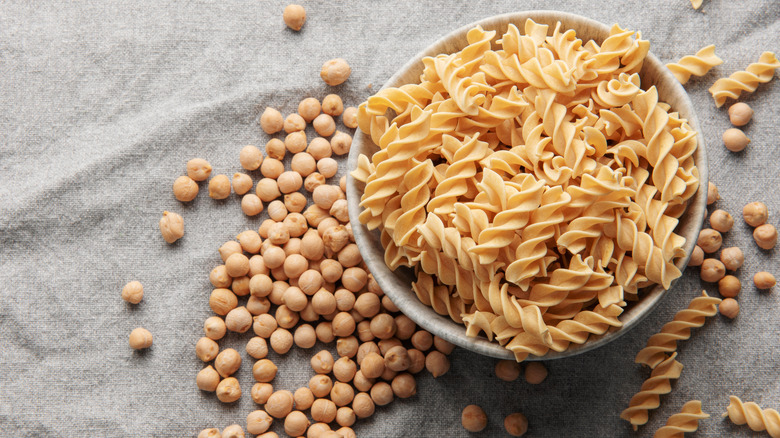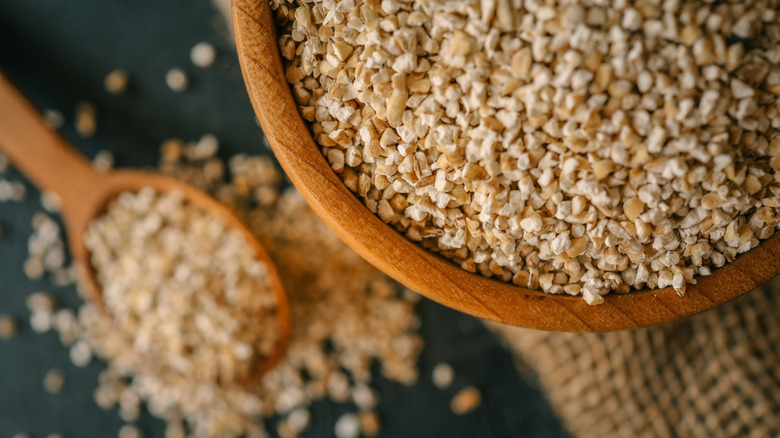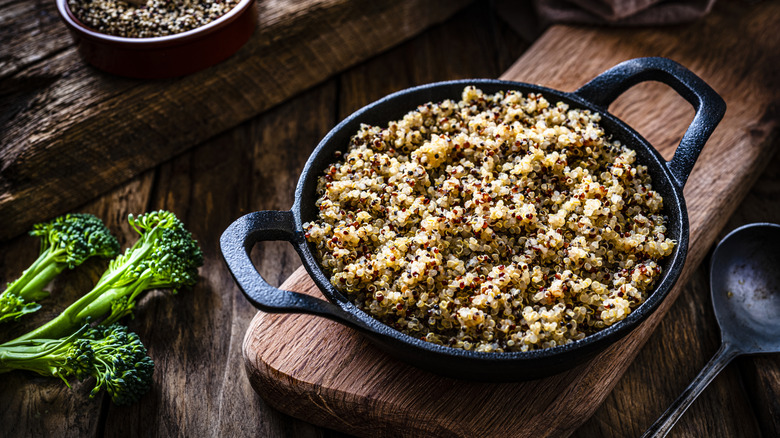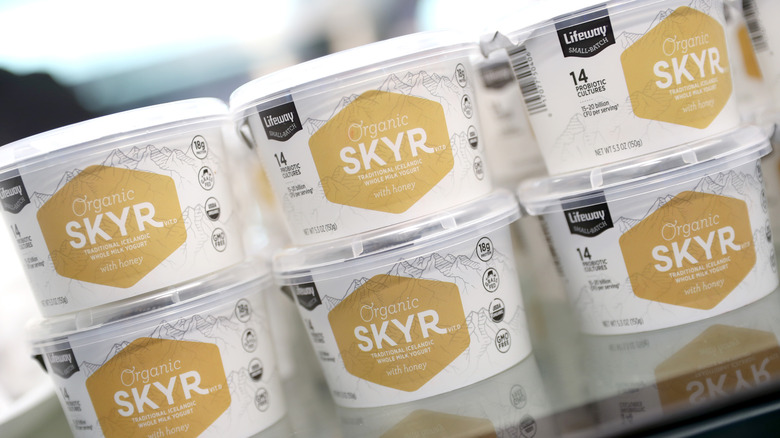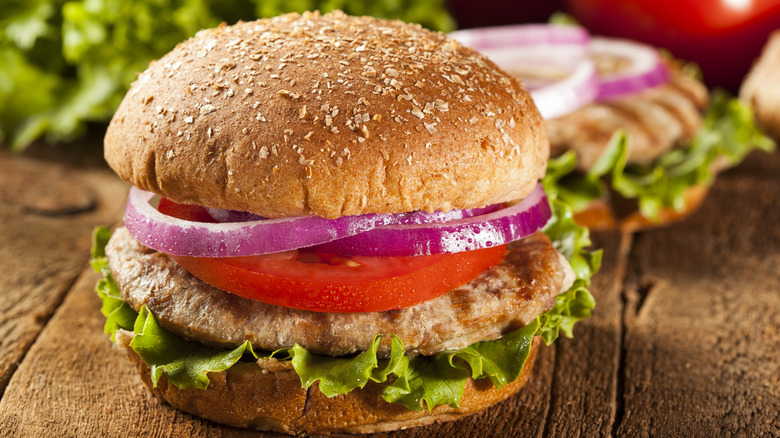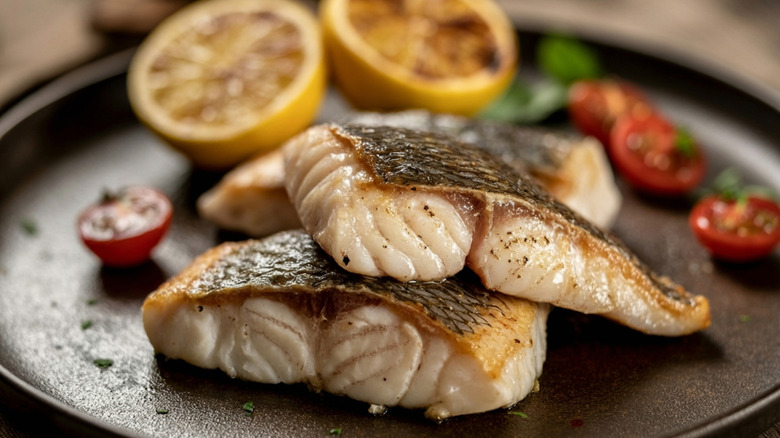12 Grocery Swaps To Create A High Protein Shopping List
A major challenge with our diet today stems from the prevalence of highly processed foods. Our supermarket shelves are full of them — cheap, convenient, and tasty to boot! However, with their high levels of salt, sugar, preservatives, unhealthy fats, and empty calories, we are facing a serious toll on our health.
It is no surprise, then, that lifestyle diseases are so prevalent. Almost all families have to cope with members suffering from illnesses such as obesity, diabetes, heart disease, hypertension, and more. The best way to prevent these illnesses or treat (if not reverse) them, is to overhaul your diet and prioritize whole, nourishing foods. And one of the simplest ways to change these dietary habits is by increasing your intake of high-quality protein. But knowing where to start can be overwhelming.
Should you remove all the "offensive" items in your pantry and start from scratch? Or can you ease your new eating plan, making small, feasible swaps, one item at a time? We wholeheartedly support the latter strategy arming you with this list of grocery store swaps that help you eat more protein while cutting back on empty calories and unnecessary additives. Every small change is a huge difference in the making.
1. Instead of processed snacks, choose nuts and seeds
Is your snack drawer full of chips, cereal bars, cookies, or other pre-packaged processed snacks? If so, then it's definitely time for you to swap them for some healthier, high protein options. These types of snacks are not only full of additives and preservatives, but also disastrously high in salt and sugar content, as well as full of empty calories. A handful of unsalted nuts and seeds contain a mix of protein, fiber, minerals, and healthy fats. Not only are they much more nutritious, but they will also keep you full longer. Be mindful of the portions and try to eat a handful of 10 to 12 nuts a day, while avoiding those with added salt or sugar.
If you suffer from a nut allergy, dip into a packet of crunchy seeds instead. Pumpkin seeds or pepitas are rich in protein, about 8 grams per ¼ cup, and their tryptophan content will also help you sleep better. Sunflower and hemp seeds are also protein-rich and provide you with necessary healthy fats and antioxidants. Chia and flaxseeds are rich in omega-3 fatty acids and are good for your brain and heart. Adding them to your meals is also easy — just sprinkle them on your morning oats or toss into your lunch salad to upgrade your meal from filler to fuel.
2. Instead of canned soup, choose canned tuna or sardines
On days when you couldn't be bothered to chop, stir, and cook, the convenience offered by canned soup is indisputable. Unfortunately, a single can of soup can contain almost half of your recommended daily sodium limit. Additionally, most soups (even the vegetable ones) have very poor nutritional value and won't keep you full for long.
If you really want to just open a can for dinner, a better choice would be canned fish instead of soup. Fish is a rich source of proteins and other nutrients especially fish such as salmon, tuna, mackerel or trout, that contain about 20 to 25 grams of protein per can, along with other important nutrients such as vitamin D, minerals, and omega-3 fatty acids. Canned tuna is very versatile, working well with rice, as a salad, or mashed with Greek yogurt, lemon, and herbs to make a delicious protein spread. Canned sardines are high in calcium and vitamin D and can be had with toast, mixed into a pasta, or even layered onto a pizza to give you a high-protein meal. Look for fish canned in olive oil and for either "low sodium" or "no added salt" labels on the packaging, for the healthiest options. It's time to ditch the canned soup in favor of these protein-rich canned fish tins. You get the same convenience factor but with a lot more nutrition.
3. Instead of cream cheese, choose cottage cheese
Swapping cream cheese with anything may be too big an ask. For many the curd-like, granular texture and tangy taste of cottage cheese doesn't really seem like a sub for the creamy indulgence of their favorite cheese spread. But give the cottage cheese a quick spin in the blender and things suddenly start looking a bit more appealing. Once it has been whipped into a smooth texture, it transforms into a velvety high-protein spread that works well with almost everything.
Here's what makes this swap worthwhile. Cottage cheese has double the protein and half of the fat, while delivering about 12 grams of protein with just 80 calories. Cream cheese on the other hand, has barely any protein, and a lot more fat. Cottage cheese also supports blood sugar balance and contains casein, a slow-digesting protein that keeps you feeling satiated for a long time. As a sub for cream cheese, blended cottage cheese works well in a 1-to-1 ratio for dips, spreads, pasta sauce, and even frosting. Add some lemon juice and herbs to make a savory spread, or mix it with honey and berries for a sweet breakfast topping. So on your next supermarket run, leave the cream cheese behind and take a look at the range of cottage cheese instead. This much maligned cheese deserves a permanent place in your fridge.
4. Instead of regular pasta, choose legume-based pasta
What exactly are legume-based pastas? As the name suggests, these are pastas made from legumes such as chickpeas, edamame, black beans, and red lentils. What makes them a healthier alternative is the fact that they are gluten and grain free and have good levels of protein and fiber. The brand and type of legume used is an important factor to consider, as the protein content varies. You can expect to get anywhere from 12 to 20 grams of protein from each serving, which is roughly double of what regular pasta delivers. That, plus higher levels of fiber make this choice a superior one.
Higher protein levels means better satiety and muscle repair, and higher fiber helps to put the brakes on digestion, keeping your blood sugar levels steady and contributing to a healthier gut. Vegetarians and vegans can really benefit from the increased protein levels, and they add a good mix of amino acids in combination with other foods. Of course, there is nothing wrong with regular pastas, as millions of Italians would swear. Traditional pasta is an excellent source of carbs and energy, and paired with lean protein, veggies, and healthy fats makes for a well-balanced diet. But for a touch of variety and improved protein intake, this is a simple swap that is effortless and tasty to boot.
5. Instead of ham, choose turkey breast slices
Arguably one of the tastiest and versatile deli meats, ham slices are an easy add-on in sandwiches, salads, or as a snack, and as a regular feature at the breakfast or lunch table. But this delicious meat unfortunately comes with its own baggage — high levels of salt, nitrates, and additives being the important ones. Studies have shown that regular consumption of processed meats like ham, bacon, and salami leads to an increased risk of developing hypertension, heart disease, and bowel cancer.
Because of the associated health risks, it makes a lot of sense to swap ham for a healthier alternative and turkey slices are just the thing. They are the leanest of deli options available, and a 100-gram serving of turkey breast provides around 29 grams of protein, minus the saturated fats and sodium levels of ham. On the whole, the protein in turkey meat comes with a lower fat content. This means that it is good for the heart besides helping maintain muscle mass. Swapping the ham in your sandwich, wrap, or salad for turkey will help improve your diet by keeping up the protein levels while reducing levels of fat, sodium, and other preservatives. Your body will be much better for it.
6. Instead of instant oatmeal, choose steel-cut oats
"Eat your oats" is a commandment from childhood that most of us are familiar with. Full of healthy nutrients including plant-based protein, fiber, and minerals, oats are a natural choice for the breakfast table. But over the years, the manner in which they are processed has changed, and with that change comes a big difference in how this super-food affects your blood sugar, energy, and feelings of satiety. Instant oats, as the most highly processed oats, are usually pre-cooked and have higher levels of salt and sugar added. The processing makes them more easily digestible and leads to sharp spikes and dips in blood sugar, and can leave you feeling hungry and even tired soon after.
A better option would be the least processed version — steel-cut oats. The name comes from the chopping process where the whole oat groats are chopped with steel blades and the grain left intact. This gives them that distinctive, nutty flavor, and chewy texture along with a lower glycemic index. Your breakfast becomes heartier, your blood sugar levels don't spike, and energy levels stay steady for longer. Your body also gets the benefits of additional nutrients like magnesium, zinc, iron, B vitamins, and fiber, the latter helping reduce cholesterol levels and supporting heart health.
7. Instead of white rice, choose quinoa
Rice is a much loved staple across the world, and to replace it might seem sacrilegious to many. But the fact remains that rice, especially the polished rice that is most widely consumed, has poor nutritional value and is unsuited for those struggling with getting their blood sugar levels under control. In comparison, quinoa is a nutritious grain with higher level of proteins as compared to rice. A ½-cup of quinoa provides 4 grams of protein, nearly double the amount provided by a similar sized portion of rice.
In addition, quinoa provides all 9 essential amino acids, a rarity in the world of plant-based proteins. Being rich in minerals such as magnesium, iron, and zinc as well as a rich source of dietary fiber, just adds to its appeal. The high fiber content will keep you full longer, prevent the dreaded blood sugar spikes, and keep your gut healthy — what's not to love, right? Some might say, cooking quinoa is the problem, but we are here to assure you that cooking this super grain is just as simple as cooking rice. Add two parts water to one part quinoa, allow it to simmer, and fluff up. While quinoa does happen to be costlier than rice, we believe the increased cost is offset by the higher nutritional content that it provides.
8. Instead of chicken thighs, choose skinless chicken breasts
One might well ask, "Why chicken breasts and not chicken thighs?". They are, after all, the same meat, aren't they? The answer may surprise you. Chicken thighs have a different makeup, providing more fat and less protein compared to skinless chicken breasts. A 100-gram portion of skinless, boneless chicken breast will provide approximately 165 calories with 31 grams of protein and just 3.6 grams of fat. It also provides many essential nutrients such as vitamin B6 and niacin.
The flavor profile of chicken breasts differs from chicken thighs in that it is milder, which makes it more versatile and usable in a wide range of recipes. The lighter taste offers the perfect canvas for spices, marinades, and sauces, which in turn, are also absorbed well. This is in contrast to chicken thighs which tend to be more forgiving because of their extra fat content. Several techniques can help rectify a "bland" chicken breast including pounding it to an even thickness, wrapping it in foil, or marinating the breasts, all of which help to retain moisture and make it juicier. Chicken breasts are the hands-down winner for those who require a low-fat, high-protein meal in a jiffy.
9. Instead of regular yogurt, choose Skyr
Skyr is a traditional Icelandic dairy product that dates back to the Vikings. It is made from skimmed milk with live active bacteria and has a high protein content as it has been strained to remove the whey. This is what gives it its thick, creamy texture that differentiates it from regular yogurt. Skyr contains about 9 to 11 grams of protein per 100 grams, which is what makes it an easy high-protein swap with the yogurt in your fridge.
The fermentation process it undergoes imparts a tangy flavor and gives it a texture that is similar to Greek yogurt, but denser and with reduced lactose levels. These characteristics mean it is abundantly suited for use in the kitchen in a variety of ways. Its thick consistency makes it a good substitute for many dairy products such as sour cream, cream cheese, and crème fraîche. Drizzle it over tacos, roasted veggies, or other foods, use it as a dip or mix it with some sriracha sauce to give it a bite. It can also be had plain as a breakfast dish or combined with oats, nuts, seeds and berries. This makes it a superior choice for those with lactose sensitivity or for use in recipes that call for a creamy texture. Those Vikings knew a thing or two.
10. Instead of beef burgers, choose bison or turkey burgers
Swapping your regular beef burgers with ground bison or turkey meat offers some distinct health benefits. For starters, bison meat has a lower fat content, an important consideration for your overall cardiovascular health. Your calorie intake also decreases when you swap beef for bison meat, which is great if you are hoping to shed some of those pounds. A slightly higher protein content than beef, plus a whole lot of essential nutrients such as vitamin B12, iron, zinc, and selenium, and you can see why it is the healthier choice. In addition, its milder flavor means it can absorb different seasonings, sauces, and marinades just that much better. This makes it a good choice to use in burgers, wraps, and stir fries among other recipes.
Turkey burgers are another healthy option for those looking for leaner protein. Ground turkey meat, especially the organic or pasture-raised variety, is an excellent source of high quality, lean protein. A 3-ounce portion provides around 23 grams of protein, while its milder flavor allows it to absorb spices, sauces, and marinades easily, making it a useful ingredient in many recipes. And while turkey meat may not be as lean as bison meat, it is still an excellent source of protein and lower in calories as compared to beef.
11. Instead of dairy or nut milk, choose soy milk
Soy milk has long been a favorite non-dairy substitute as nutritionally, it most closely resembles cow's milk. It is the best high-protein alternative to dairy milk, providing 7 grams of milk per cup versus the 8 grams one gets from cow's milk. Most brands fortify their soy milk with calcium and vitamin D, so be sure to check the nutrition label. You can also get soy milk in different flavors, as well as lighter and low-cal versions, to suit every diet.
Soy milk is also an excellent dairy-free alternative to dairy or nut milk, suitable for vegans who also want a high-protein option. It has the complete range of 9 essential amino acids that is required by your body for its functioning. In comparison to nut milks such as almond milk, which provides only 1 gram of protein per cup, soy milk is the real deal. The other advantage of soy milk lies in the fact that it is naturally low in saturated fats and low in cholesterol. It does contain small amounts of healthy fats that are important for cardiovascular health. Unsweetened soy milk, unlike many flavored, plant-based alternatives, is a great choice for those who need to curb their sugar intake. It works well with smoothies, for cooking (Pro-tip: Try adding it to your scrambled eggs), or can be drunk as is.
12. Instead of salmon, choose tuna or cod
For those looking to enjoy good quality, protein-rich alternatives to salmon, tuna and cod are two fish that fit the bill. Canned tuna, especially in its lighter version like skipjack, is a rich source of protein and healthy fatty acids such as omega-3. Depending on the variety served, tuna can provide anywhere from upwards of 19 grams of protein for every 3 ½ ounce serving. Along with the protein comes many essential nutrients such as vitamin B12, potassium, iron, and selenium. The combined package of these nutrients support heart health, muscle mass, and energy production, reduce inflammation, and helps bolster the immune system. The canned variety is usually considered safer than the larger, fresh variety on account of concerns with mercury levels.
Cod is a lean, white fish that provides approximately 20 grams of protein per 3 ½ ounce serving. This puts it almost on par with tuna with the added benefit of lesser fat levels and calories, which is good news if you are on a diet. Its flavor is milder than that of tuna and is a great candidate for baking, broiling, or poaching. Like tuna, it is a rich source of essential nutrients such as vitamin B12, phosphorus, and selenium that contributes to its overall "healthy" status. While salmon lovers may balk at replacing their favorite fish, adding tuna and cod can help inject some variety into your diet while keeping all the health advantages.

